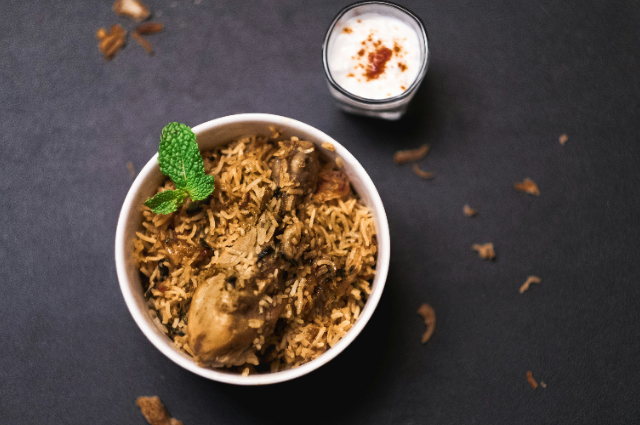
Photo by Raman on Unsplash
It was early morning as I walked through the streets of Kozhikode, through the alleyways of ‘Veliyangadi’, being constantly reminded of the aroma Calicut offers. The sounds of the ever-familiar street vendors, the porotta warming up on the iron griddle, the goods drivers loading up as they shared the gossip of the day before continuing with their journey, and the scent of the food—my God, is it delightful. The halwas and pazhampori make us gawk in awe; the ghee-roasted bananas, the different varieties of beef sizzling, making us drool, and almost at all times pushing us into having a taste. The waves crash against the shore, while the thick smell of sweet ghee, along with the salt, wraps the city in a familiar warmth.
I remember when I had landed after completing my first year, a time when I desperately craved Kozhikode and its sweetness. Walking through the streets of ‘Kuttichira’, with ‘Champions’ and ‘Edele Hotel’ at my front, and having to choose between the two had energized me in ways I cannot describe with words. The squid and prawns boiling in the red-hot pits of heaven reach our eyes first, only to be overtaken by the sharp scent of the pepper, then the rich aroma of beef. Seeing the beef being cooked in that large pot satiates the greed inside your body, enough to make anyone gulp involuntarily.
The aroma isn’t just accidental. It’s not something inherent; it’s something that was built after centuries of trade with Arab merchants influencing Moplah cooking, and sweetened by a legacy of spice routes that made this city “The Food Capital of Kerala.”
Calicut was one of the most important trade posts on the Malabar coast, offering spices like black pepper and cardamom. The Arabs and Portuguese docking here largely influenced Kozhikode—the emergence of the ‘Mappila’ cuisine after the settling of Arabs led to a blending of Arab and Malayali traditions. Dishes like pathiri, kalummakkaya, unnakkaya, and chatti pathiri, which are at the heart of Kozhikode’s food identity, come from this blending of traditions. Not just the Arabs, but the Portuguese too deeply impacted Calicut’s culinary style. With them bringing in ingredients like potatoes, tomatoes, and chilli, Malayalis were introduced to a far greater list to choose from. The famous steamed rice cakes, or puttu, are a dish largely inspired by the Portuguese.
This history has boiled into unforgettable dishes, each carrying traces of different cultures and trade. Mornings often begin at ‘Bombay Hotel’—beloved by early risers, especially the oldies. They go for their morning walks, which usually end up in gaining more calories. Pazhampori, chatti pathiri, and a hot sulaimani by their side as they discuss “the political and economic state of the world.” The town gossip starts from here, pazhampori and pathiri are the witnesses. On a less conscious morning, mornings begin with the heavy guns themselves: an iconic plate of freshly cooked porotta and beef at Champions, Edele, or other places. Cholesterol may be up, but what is cholesterol to a nice plate of porotta and “nalla beef varattiyathu”? And to further boast about it, it offers a scenic view of the Kuttichira pond too.
Then comes the afternoon—the time when Kozhikode truly comes alive. The aroma of the morning snacks starts to disappear, and along comes the scent of the Malabar biriyani. No conversation about Kozhikode’s food is complete without mentioning its biriyani. In fact, no conversation with a person from Kozhikode is complete without mentioning biriyani. A world-renowned dish that has captivated the hearts of many, but Kozhikode’s biriyani is different. Unlike the Thalassery or Hyderabadi styles that prioritize bold, spicy flavours, Kozhikode’s biriyani is a subtle yet flavourful dish—fragrant jeerakasala rice, tender meat, along with pickles of different kinds that elevate the experience without overwhelming the plate. Calicut is filled with places that excel in the craft of cooking up biryanis, yet for many, ‘Rahmath Hotel’ stands at the very top. You enter the packed ‘Rahmath Hotel’ under the scorching heat of Kozhikode, waiting for a seat as frustration continues to pile up inside you until the hot plate of beef biriyani arrives on your table, silencing everything. You take a handful of rice, so well-cooked along with beef that melts inside your mouth, the tomatoes and onions mixed and ground into perfection, almost unnoticed as they sweep the frustration away from your body. The biriyani provides the dose for an afternoon nap, and the nap provides for some unnakkaya filled to the brim or an egg puff, a golden parcel of joy that has saved students from mid-day hunger—and of course, a cup of chaaya or a milk sarbath from ‘Bhaskarettan’s’.
And at last comes the night, offering a mix of both the morning and the afternoon. Whether it’s Paragon’s vellappam and fish mango curry, or yet another plate of porotta and beef, or a newer celebrated delicacy of Kerala—a mandhi from Soofi.
It is changing, though. Like the tides that kiss the Kozhikode shore, the city's food culture has seen shifts. We see old beloved spots shutting down, not being able to compete against the cheap labour offered by the larger food chains. Cooks of small eateries are coerced into working for the large brands, often leading to the demise of small businesses. Not only this, but global influence has largely changed what used to be the core of Kozhikode cuisine. Fast food outlets and MNCs largely hold the reins in Kozhikode now, with new outlets popping up almost every single week. The old delicacies are replaced by newer, more recognised ones. Like, I had gone to a new chai spot hoping to have an egg puff or a pazhampori, only to find that there weren’t any being made. Although I do enjoy the newer treats, it’s sad how an important part of our history is fading away—not quickly, but surely.
